Feeling frustrated about not tapping into your full shooting potential? Much of this comes down to how you grip your handgun. Believe it or not, many miss out on mastering the proper technique. Wondering how should you hold a handgun for maximum accuracy? Let us guide you on mastering the pro's way to hold your firearm.

Safety Precautions at the Gun Range
Before learning to shoot accurately, there are some safety precautions you should follow at the gun range. These are:
- following four basic gun safety rules
- wearing ear and eye protection for shooting - TradeSmart offers a 10-year warranty and FREE SHIPPING on all products
How should you hold a handgun for maximum accuracy?
Now, we can get into the tips on how to hold your handgun for maximum accuracy. Here are six tips you can implement to help you improve your shooting skills.
1. Hold the gun with both hands.
Gripping a handgun sounds like a handful! However, to achieve the highest accuracy and consistently hit your targets it's crucial to perfect your grip. The great news? A two-handed grip offers the stability you need. While the one-handed grip has its merits, it's best saved for when you're more seasoned.
By spreading the weight of the firearm between both hands, you'll be able to tame the recoil and better absorb the shock of each shot, resulting in a more accurate and consistent aim.
 Another advantage of gripping the gun with both hands is that it allows you to better control your trigger finger.
Another advantage of gripping the gun with both hands is that it allows you to better control your trigger finger.
With your non-dominant hand supporting the firearm, you can use your trigger finger to gently press the trigger without inadvertently pulling the gun off-target.
This can be especially helpful for precision shooting or when firing multiple shots in quick succession.
2. Find the Right Grip Strength.
Finding the right grip strength can make all the difference.
Grip strength that's too weak can result in the gun shifting or rotating during recoil, while a grip that's too strong can cause muscle fatigue and throw off your aim.
So, how do you find that sweet spot?
First and foremost, you want to ensure that your grip is firm and secure but not so tight that you're tensing up your whole arm. This means the grip should be strong enough to keep the gun from slipping or rotating but relaxed enough that you can maintain control and focus on your aim.
It's important to note that grip strength can vary depending on the size and weight of the firearm. For instance, to maintain control and accuracy, you may need a firmer grip for larger, heavier guns.

3. How should you hold a handgun for maximum accuracy? Position one hand under the other.
For top accuracy, every little detail counts. One technique that can make a big difference in your accuracy and stability is placing one hand under the other.
To execute this technique, grip the handgun with your dominant hand as you normally would, with your support hand supporting the firearm from underneath.
Then, instead of simply resting your support hand against the grip or trigger guard, slide it forward, so it's directly under your strong hand.
This creates a more solid and stable platform for your shots, allowing you to better absorb recoil and maintain control of the firearm.
It's worth noting that this technique may not be suitable for all firearms or shooting styles. Some shooters may prefer a different grip technique for specific situations or types of firearms.
However, for those looking to improve their accuracy and control with a handgun, placing one hand under the other is definitely worth a try.

4. Mastering opposite forces for a steady shot.
Another great technique to help you maintain a steady and accurate aim is using opposite forces when gripping the gun.
By applying force in opposing directions, you can create a more stable platform for handgun shooting, allowing you to maintain control and precision even when firing multiple shots.
This technique, also known as the "push-pull" technique, uses your dominant hand to grip the gun tightly and pull back. In contrast, your non-dominant hand simultaneously pushes forward to create a counter-force.
The key is to maintain a firm and stable grip without over-gripping or jerking the trigger, which can lead to inaccurate shots.
By using opposite forces, you can better control the handgun's recoil, keeping it steady and on target for more accurate shooting.
It may take some practice to master this technique, but once you get the hang of it, you'll notice a significant improvement in your accuracy.
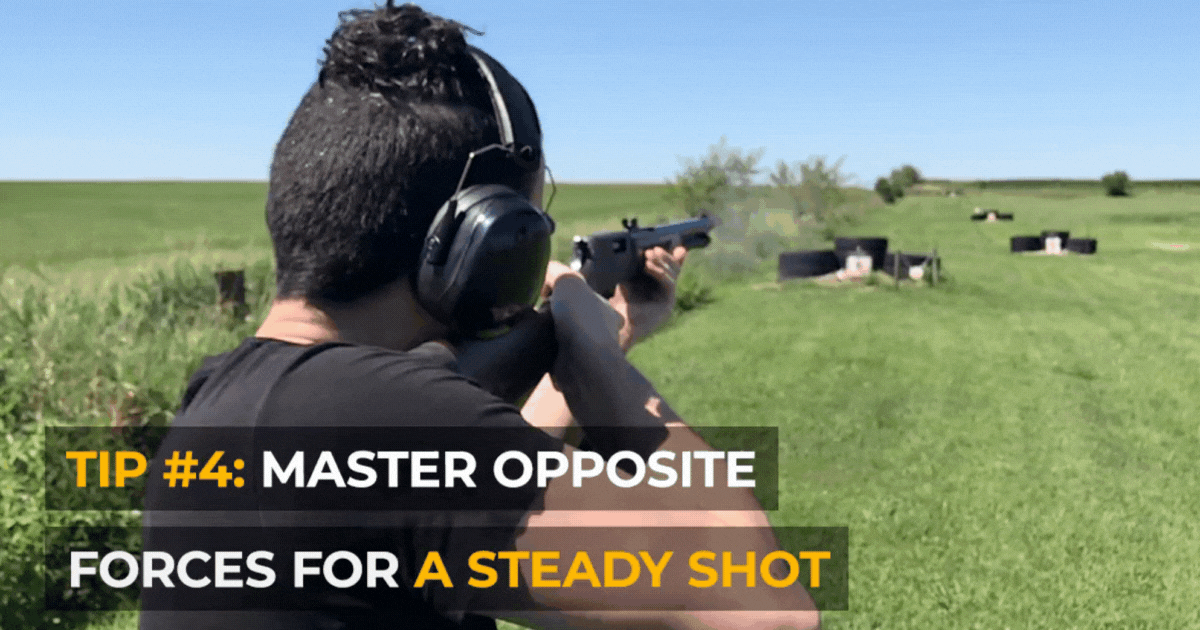
5. Control your breathing.
Tip #5 on "How should you hold a handgun for maximum accuracy?" is controlled breathing.
This is crucial if you want to shoot a handgun accurately. The act of breathing naturally causes your body to move slightly, which can affect your aim.
To minimize these effects, you need to learn how to control your breathing so that you're not inhaling or exhaling when you're about to take a shot.
One technique for controlling your breathing is to take a deep breath, exhale halfway, and then hold your breath for a few seconds before taking the shot.
This can help to stabilize your body and reduce any unnecessary movements.

6. Smoothly squeeze the trigger.
The last tip on this list is to pull the trigger slowly and smoothly.
Pulling the trigger too quickly can cause the gun to move slightly, throwing off your aim and resulting in a missed shot.
To avoid this, maintain a steady grip on the gun and pull the trigger slowly and steadily. Take your time and focus on squeezing the trigger in a controlled manner.
Additionally, you should focus on keeping your finger in the proper position on the trigger. Ideally, you want to place the pad of your finger on the trigger rather than the tip so you have better control over the trigger.
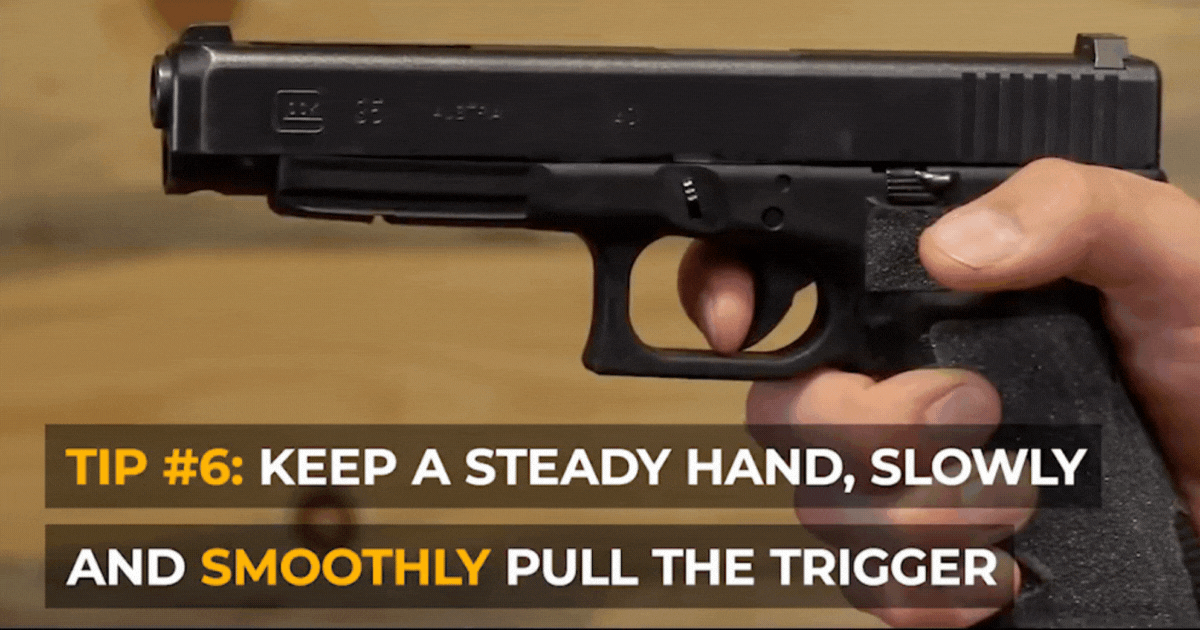
How Should You Hold a Handgun for Maximum Accuracy Tips - Summary
Holding a handgun for maximum accuracy is both an art and a science.
The foundation is a stable grip. Start by placing the web of your hand snugly against the beavertail of the handgun. This high hand placement minimizes muzzle flip, allowing for quicker and more accurate follow-up shots.
The fingers of your dominant hand should envelop the grip, with your knuckles stacked and your thumb resting high, pointing forward. Your non-dominant hand then wraps around your dominant hand, covering any exposed grip.
The thumbs of both hands should lie flat against each other, pointing toward the target.
Your stance is equally important. Whatever shooting stance you choose, ensure your feet are shoulder-width apart to provide a stable base. Your weight should be slightly forward, absorbing the recoil and ensuring you're not knocked off balance.
Your arm positioning is pivotal too.
With a two-handed grip, the arms should extend fully, creating a firm triangle of support that minimizes side-to-side motion. The focus shouldn't just be on strength but on consistency. You want to hold the handgun the same way every time to create muscle memory.
Lastly, the mental aspect cannot be overstated.
Focus on your sights, maintaining a clear sight picture, and always remember the mantra "slow is smooth, smooth is fast". A calm, deliberate approach, combined with regular practice, will refine your technique and enhance your accuracy.
And, of course, no matter how seasoned you become, never compromise on safety. Always treat every firearm as if it's loaded, and familiarize yourself with its unique safety features and mechanisms.
Conclusion - How to Hold a Handgun
In summary, holding a handgun for maximum accuracy requires proper technique, practice, and focus. To achieve optimal accuracy, it's crucial to maintain a strong and stable grip on the gun, keep your body and arms in the proper position, control your breathing, and pull the trigger slowly and smoothly.
It's also important to remember that safety should always be the top priority when handling firearms. Always wear ear and eye protection for shooting, follow the four primary rules of firearms safety, and seek professional instruction and guidance if you're a beginner.
By practicing these techniques and focusing on good form and safety, you can improve your accuracy and become a more confident and skilled marksman. Whether shooting for work, self-defense, or simply enjoying the sport, holding a handgun with proper technique and control is essential to achieving your goals.
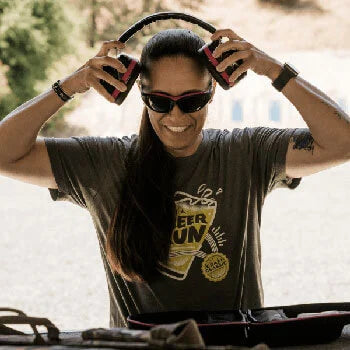
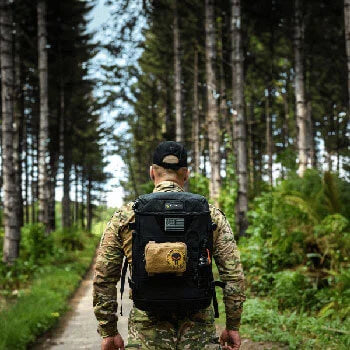
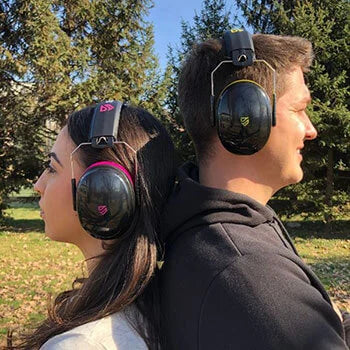
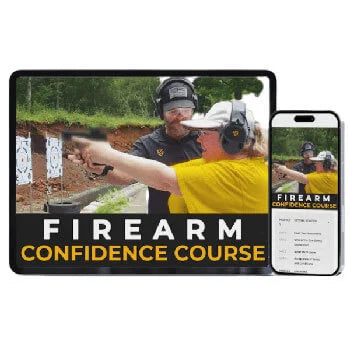
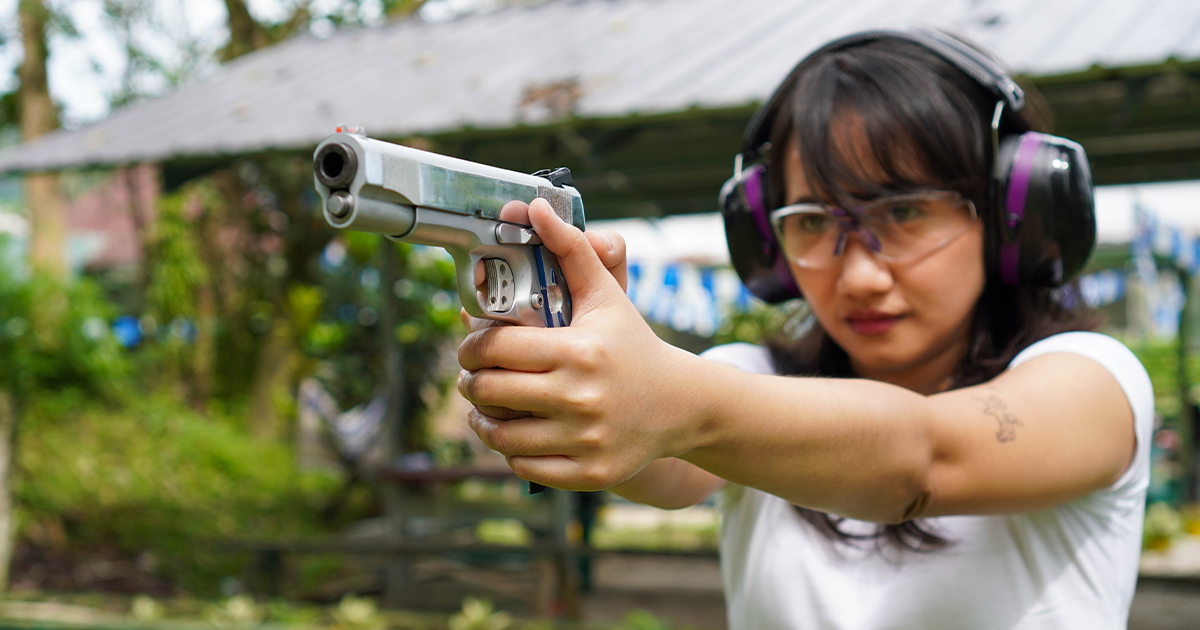


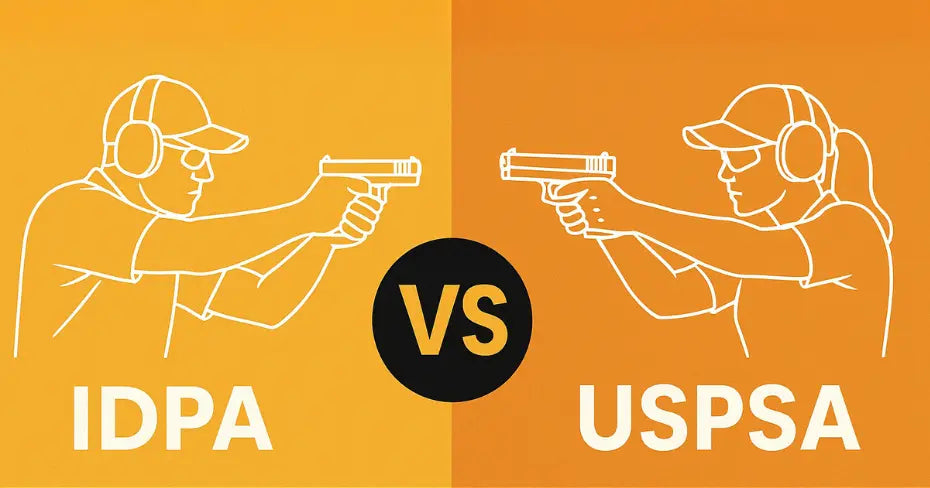
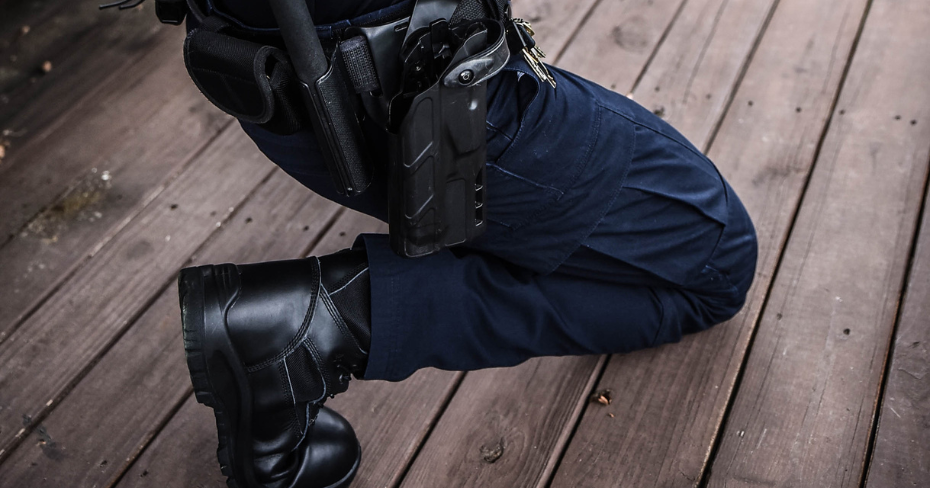
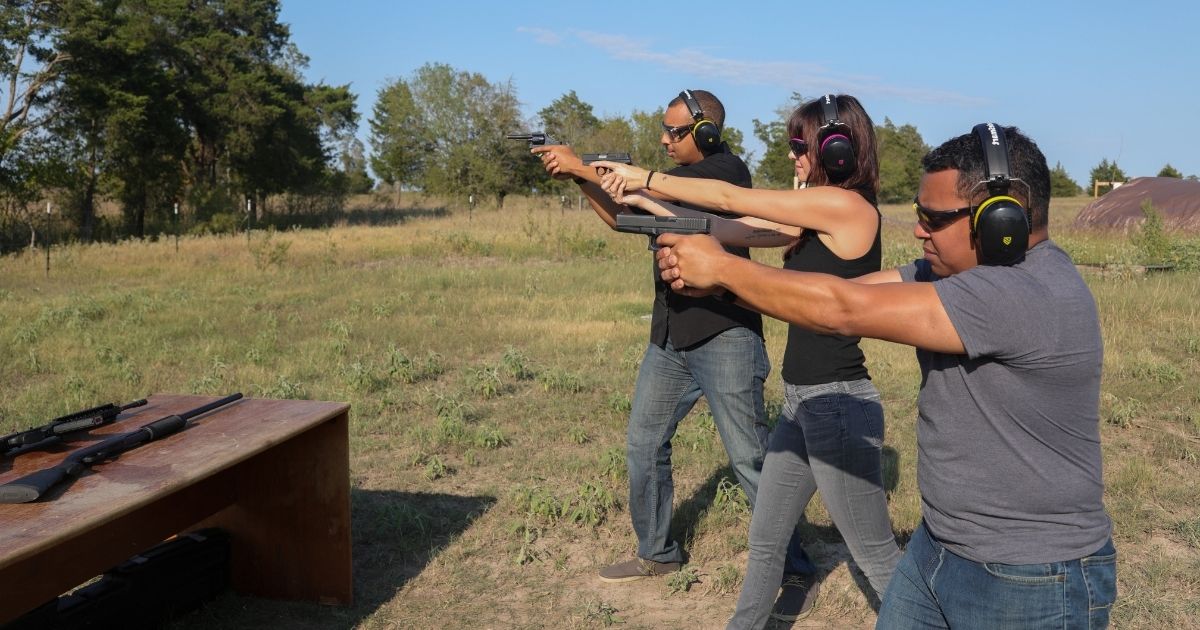
Leave a comment (all fields required)